[Newsbits] 21-23.03.2024: BhashaNet Portal, World Happiness Report & More

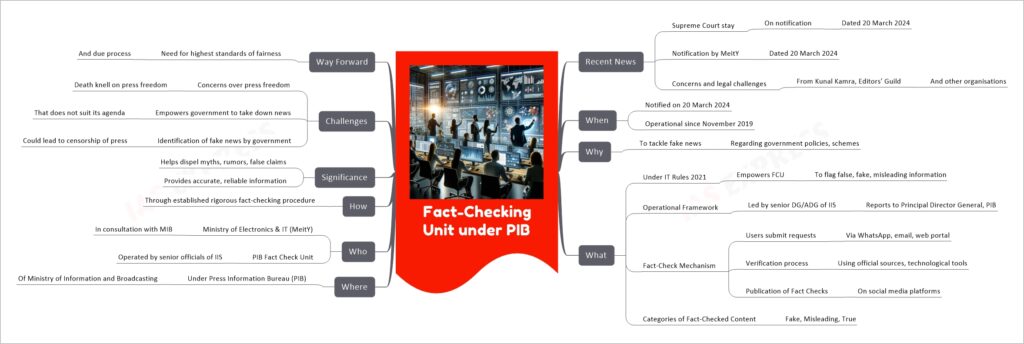
The Fact-Checking Unit under the Press Information Bureau (PIB) is a government initiative aimed at identifying and countering misinformation related to the government’s policies, schemes, and activities. Officially notified on 20th March 2024 by the Ministry of Electronics and Information Technology (MeitY) in consultation with the Ministry of Information and Broadcasting (MIB), this unit operates under the framework of the IT Rules 2021. Its mission is to verify claims and dispel false narratives through a thorough fact-checking process. Concerns have been raised about the potential for such a unit to affect press freedom and the impartiality of fact-checking when it is conducted by a government body. Legal challenges and public debate highlight the complexity of balancing the fight against misinformation with the preservation of free speech and journalistic independence.
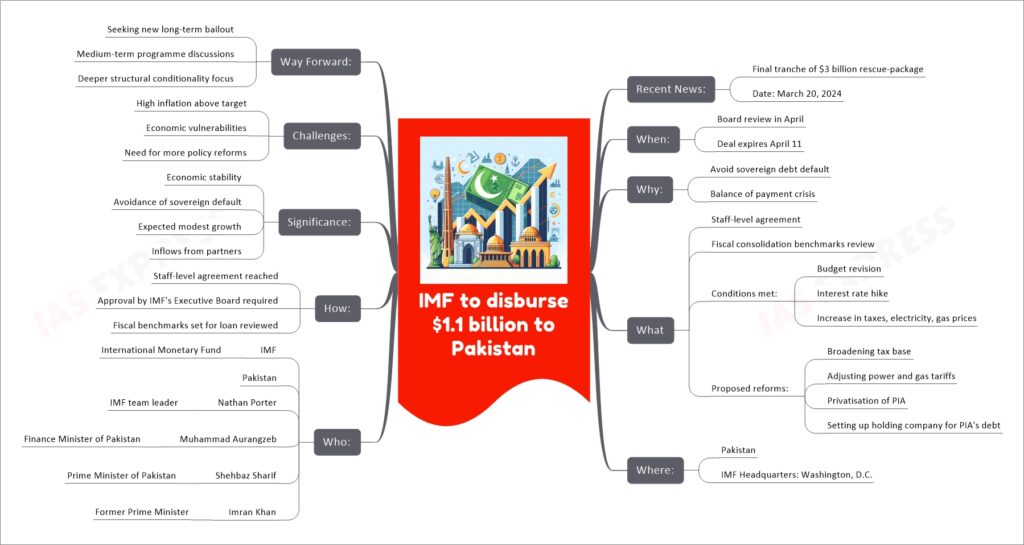
The IMF has initially agreed to disburse $1.1 billion to Pakistan, marking the final portion of a previously secured $3 billion rescue package. This financial aid is crucial for Pakistan as it navigates through a dire economic situation, including a balance of payment crisis and the looming threat of sovereign debt default. The staff-level agreement, subject to approval by the IMF’s Executive Board, aims to bolster Pakistan’s economy by implementing stringent fiscal measures, including a budget revision, an interest rate hike, and the increase in taxes and utility prices. Additionally, it calls for broadening the tax base and adjusting power and gas tariffs. Amidst seeking this disbursement, Pakistan is already in pursuit of another long-term bailout from the IMF, indicating ongoing economic challenges and the need for substantial policy reforms.
In simpler terms, the International Monetary Fund (IMF) has decided to give Pakistan $1.1 billion as the last part of a bigger $3 billion help package. This money is very important for Pakistan to help fix its economic problems and to avoid failing to pay back its debts. The deal between the IMF and Pakistan requires Pakistan to make some tough economic changes, like increasing taxes and the cost of electricity and gas, to get the money. Also, Pakistan is looking for more help from the IMF to keep improving its economy. This is a step to help Pakistan’s economy get better, but it also shows that Pakistan has to make more changes to fully stabilize its economy.
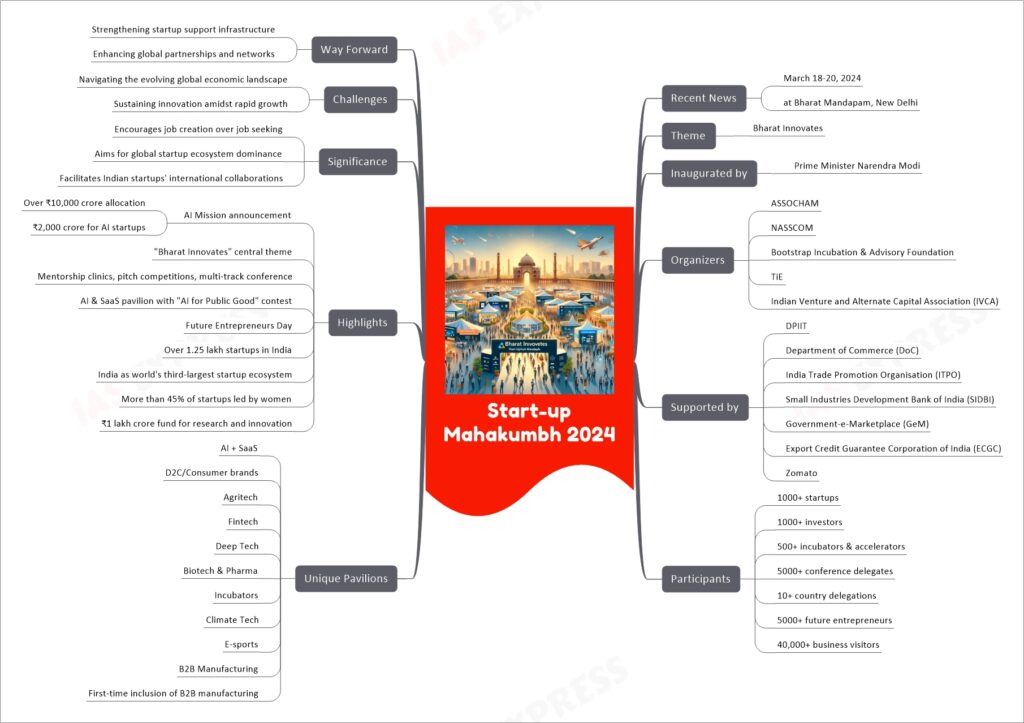
The Start-up Mahakumbh 2024 is an event celebrating and showcasing the vibrancy of India’s startup ecosystem. Held from March 18-20 at Bharat Mandapam in New Delhi, it’s themed “Bharat Innovates” and inaugurated by Prime Minister Narendra Modi. Organized by leading industry bodies like ASSOCHAM, NASSCOM, and others, and supported by various government departments, it features over 1,000 startups, investors, and incubators. The event highlights include sector-specific pavilions like AI & SaaS, Agritech, Fintech, and more, emphasizing India’s role as a global innovation hub. It underscores the importance of job creation, entrepreneurship, and the collaborative efforts aimed at making India a leader in the global startup landscape.
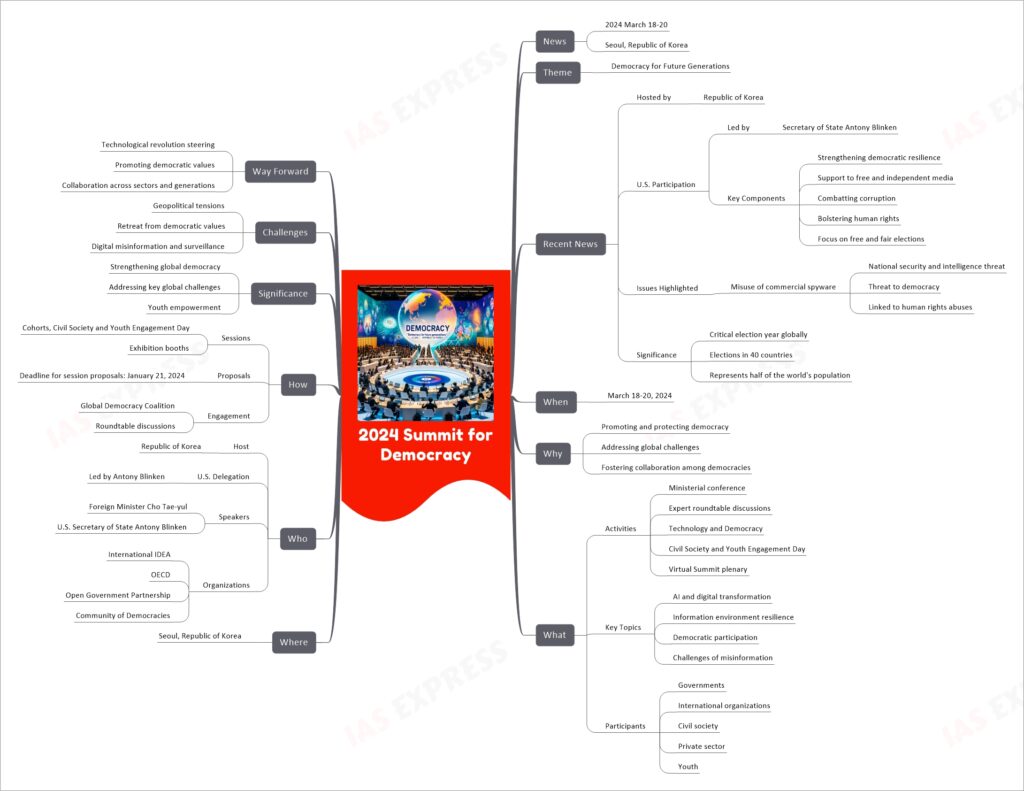
The 2024 Summit for Democracy, held from March 18-20 in Seoul, Republic of Korea, focuses on the theme “Democracy for Future Generations.” This event, hosting an international assembly of leaders from governments, civil society, and the private sector, emphasizes strengthening democratic governance globally. The U.S. delegation, led by Secretary of State Antony Blinken, highlights key initiatives to reinforce democratic resilience, combat corruption, and ensure free and fair elections globally, with a special focus on the misuse of commercial spyware as a significant threat to democracy.
Activities across the three days include a ministerial conference, expert discussions on “Technology and Democracy,” and a virtual summit plenary. Civil society and youth organizations play a crucial role, with dedicated sessions to showcase their contributions to democracy. The summit, positioned at a critical time of global elections, seeks to address the intertwined challenges of technological advancements, misinformation, and the necessity of democratic engagement for future generations.
This gathering is not just about discussions but aims at actionable insights and collaborative efforts across countries and sectors to promote and protect democratic values in the face of modern challenges, highlighting the importance of youth involvement and the potential of technology as both a tool and a challenge for democratic practices.
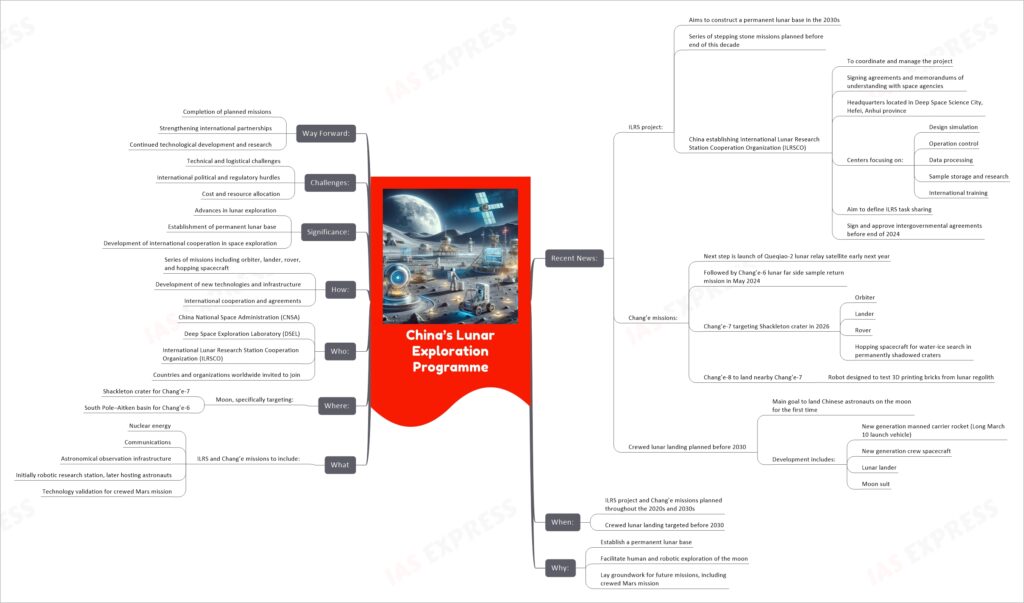
China’s Lunar Exploration Programme is a broad and ambitious initiative aimed at exploring the Moon through a series of robotic missions and eventually establishing a permanent lunar base in the 2030s. This programme encompasses the launch of various Chang’e missions, each with specific goals ranging from lunar sample returns to testing technologies for in-situ resource utilization and constructing infrastructure for a robotic, and later, crewed lunar research station. The programme also includes plans for China’s first crewed lunar landing before 2030, leveraging breakthroughs in space technology, including new spacecraft, launch vehicles, and moon suits. Central to these efforts is the International Lunar Research Station (ILRS), proposed to be a collaborative international project aimed at lunar exploration and beyond. The initiative underlines China’s commitment to becoming a leading power in space exploration, fostering international cooperation, and setting the stage for future interplanetary missions.
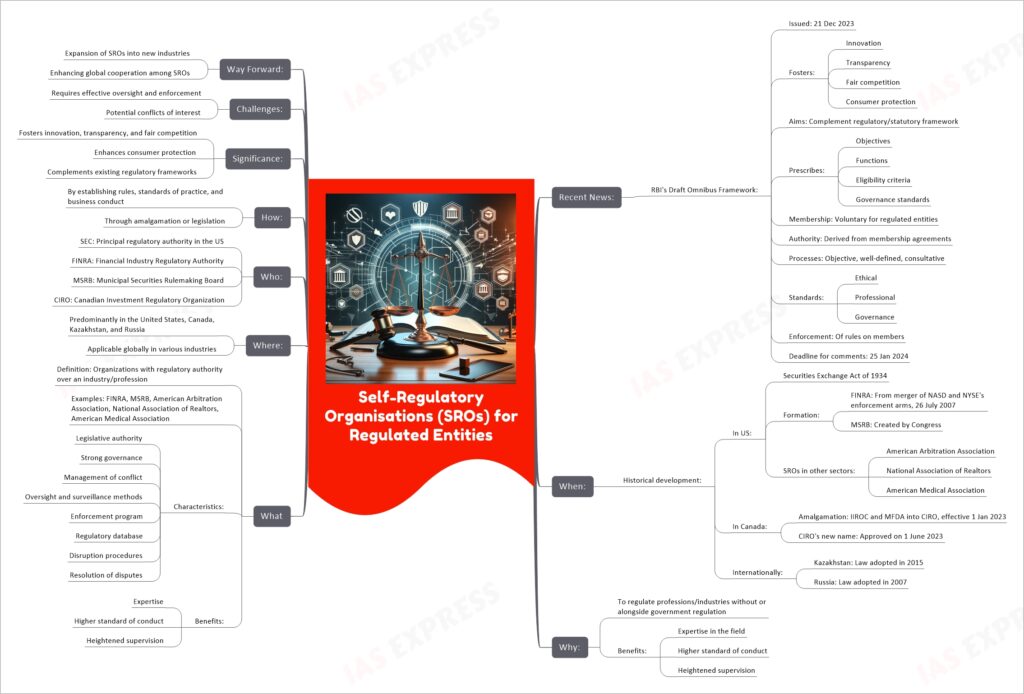
Self-Regulatory Organizations (SROs) for Regulated Entities play a crucial role in regulating professions and industries, either in the absence of or alongside government regulation. They are typically non-governmental organizations responsible for setting and enforcing standards, rules, and conduct within their respective domains. SROs like the Financial Industry Regulatory Authority (FINRA) in the United States or the Canadian Investment Regulatory Organization (CIRO) in Canada, offer numerous benefits including expertise in their fields, maintaining higher standards of conduct, and ensuring heightened supervision without direct government involvement. This approach fosters innovation, transparency, fair competition, and consumer protection, complementing the existing regulatory frameworks.
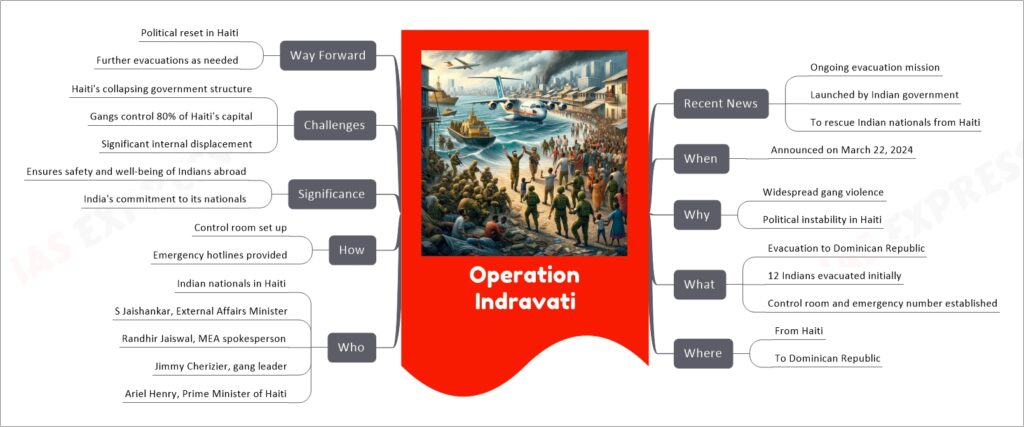
Operation Indravati is a significant evacuation mission launched by the Indian government to rescue Indian nationals from Haiti amidst severe gang violence and political turmoil. This operation involves relocating individuals to the Dominican Republic for their safety. It was initiated in response to the deteriorating security situation in Haiti, where gangs have taken control of significant portions of the capital, leading to widespread chaos and a practical absence of government. The Indian government’s proactive steps, including the setup of a control room and emergency numbers, demonstrate its commitment to the safety and well-being of its citizens abroad. The operation is named after the Indravati River in India, symbolizing a lifeline for those in distress.
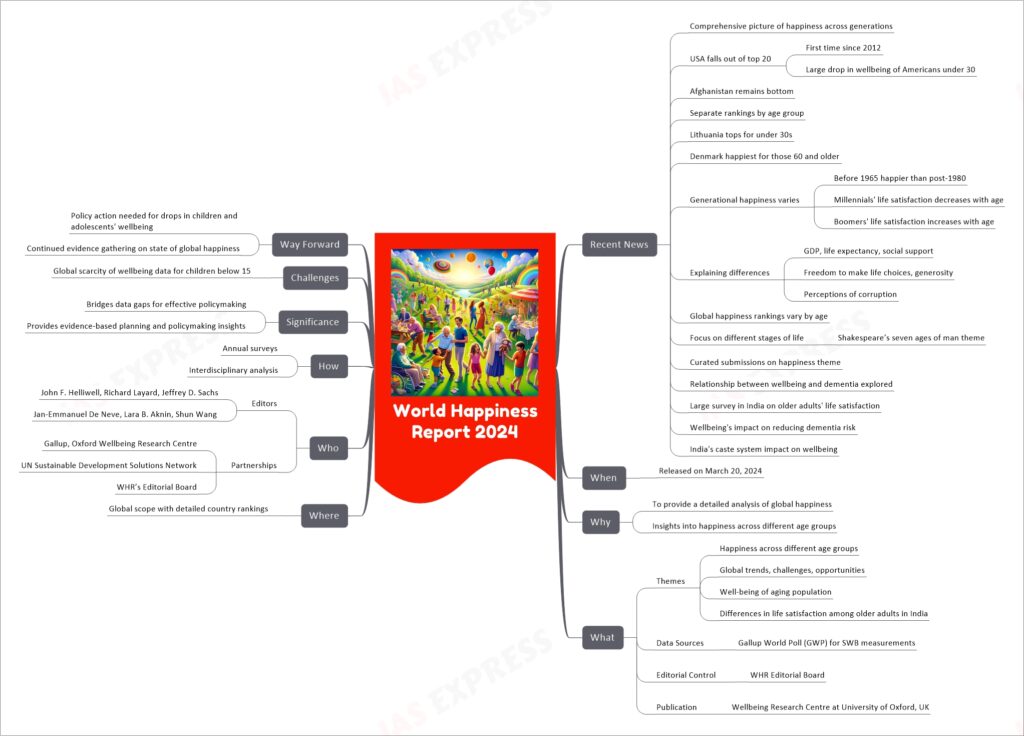
The World Happiness Report 2024 takes a comprehensive look at global happiness across different generations, highlighting how happiness varies by age, with significant insights into the well-being of younger and older populations. This year’s report is notable for its detailed exploration of happiness at various life stages, leveraging data from the Gallup World Poll and focusing on factors like GDP, life expectancy, and social support to explain differences in happiness across countries. It also delves into specific issues such as the impact of wellbeing on dementia risk and the effects of India’s caste system on older adults’ happiness. The report is a collaborative effort led by renowned editors and represents a partnership among Gallup, the Oxford Wellbeing Research Centre, and the UN Sustainable Development Solutions Network, now published by the Wellbeing Research Centre at the University of Oxford.
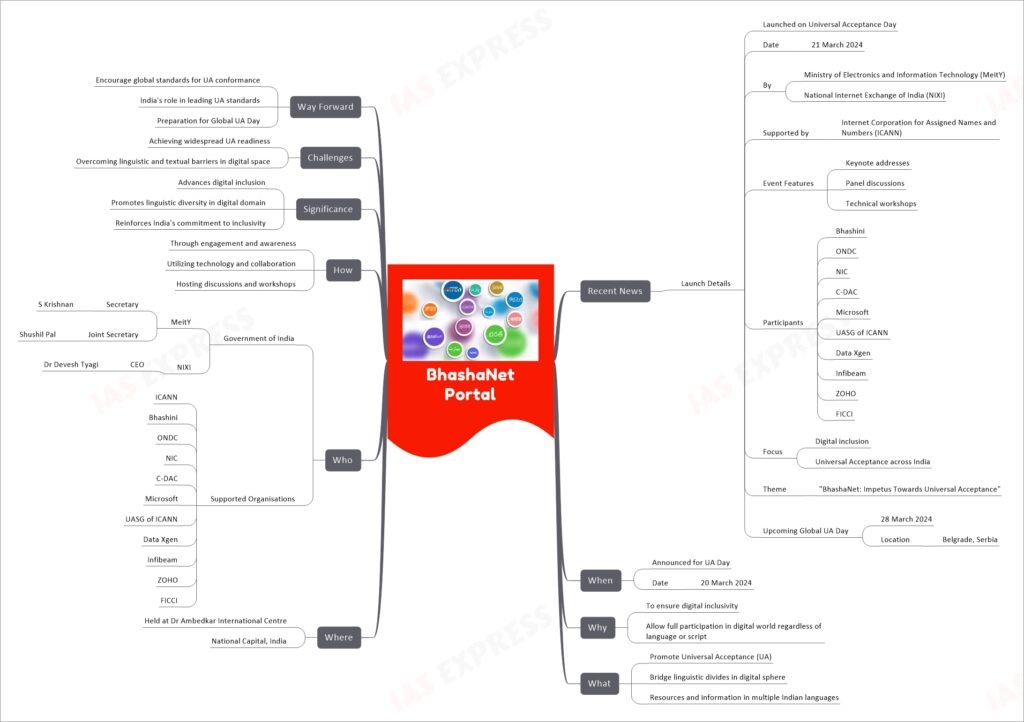
The BhashaNet portal was unveiled by the Ministry of Electronics and Information Technology (MeitY) and the National Internet Exchange of India (NIXI) on Universal Acceptance Day, March 21, 2024, to promote digital inclusion and universal acceptance across India. Designed to bridge linguistic divides in the digital sphere, BhashaNet aims to ensure that everyone, regardless of language or script, can fully participate in the digital world. The portal’s launch marks a significant milestone in advancing digital inclusivity, supported by key stakeholders including the Internet Corporation for Assigned Names and Numbers (ICANN). Through workshops, discussions, and collaboration, BhashaNet focuses on empowering users and developers towards making systems universally accessible, thus reinforcing India’s commitment to creating an inclusive digital space for all.
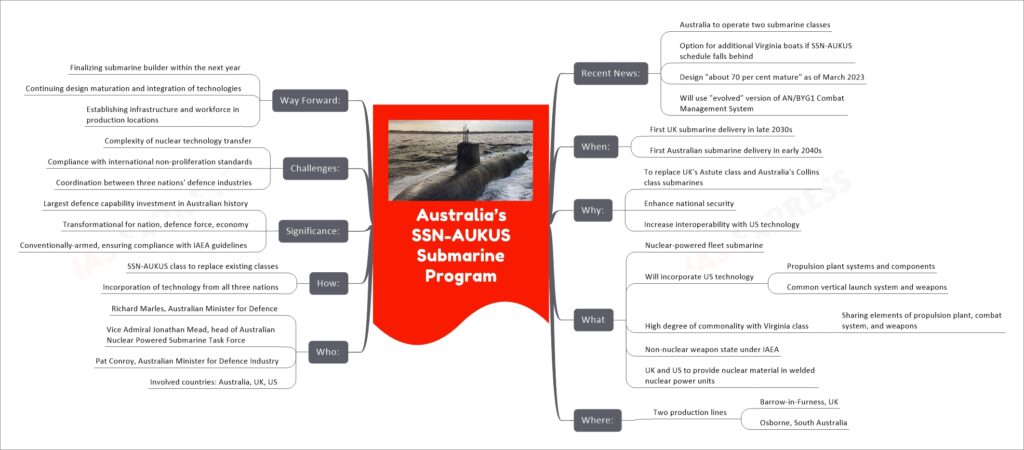
The SSN-AUKUS Submarine Program is a collaborative effort by Australia, the United Kingdom, and the United States to develop a new class of nuclear-powered submarines. This initiative aims to replace older submarine classes with a more advanced, nuclear-powered fleet that integrates cutting-edge technology from all three nations. The program highlights a significant investment in defense capabilities, emphasizing interoperability, enhanced security measures, and the strengthening of international partnerships. With plans for delivery starting in the late 2030s for the UK and the early 2040s for Australia, the SSN-AUKUS submarines represent a major leap forward in naval technology and defense strategy.
If you like this post, please share your feedback in the comments section below so that we will upload more posts like this.
